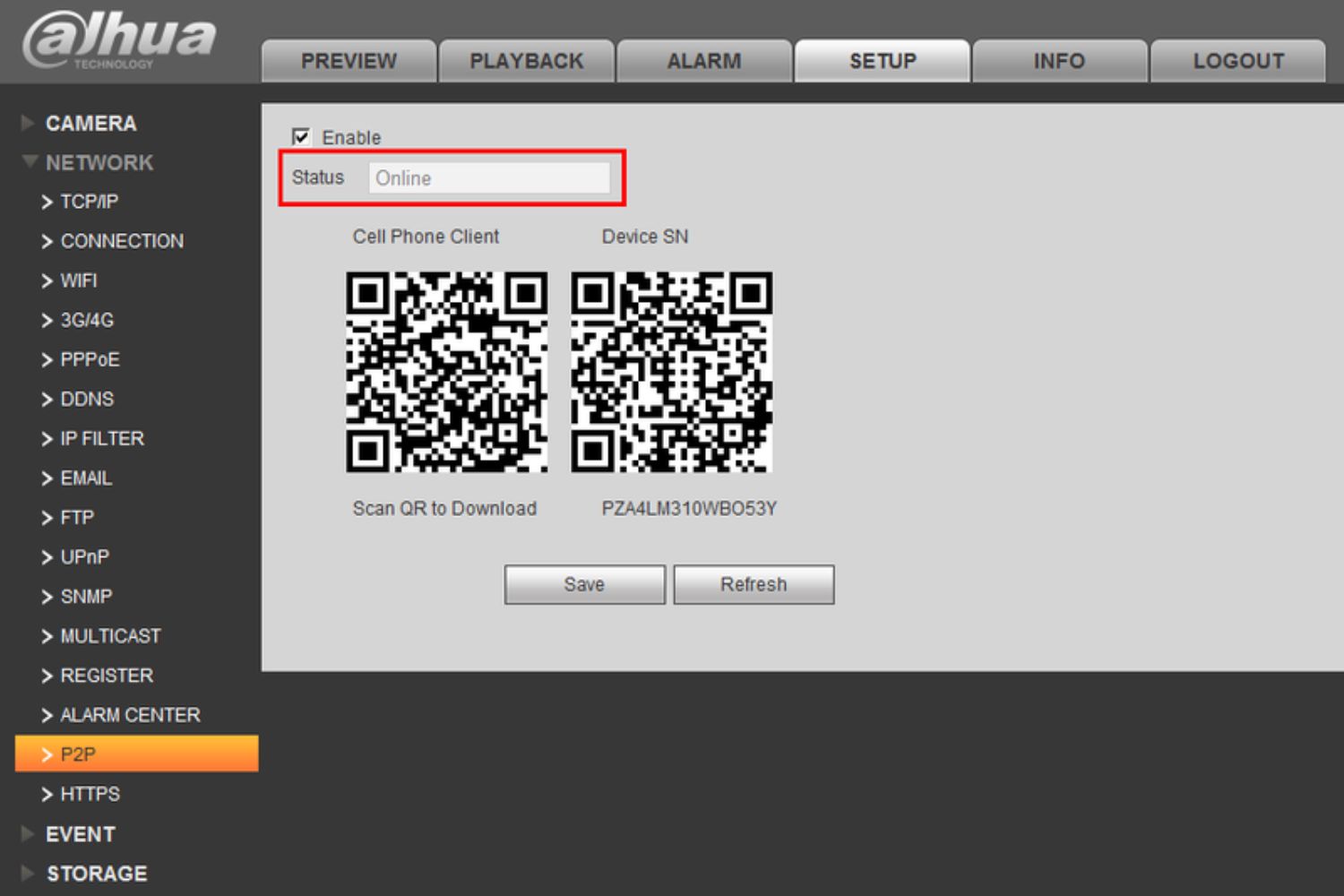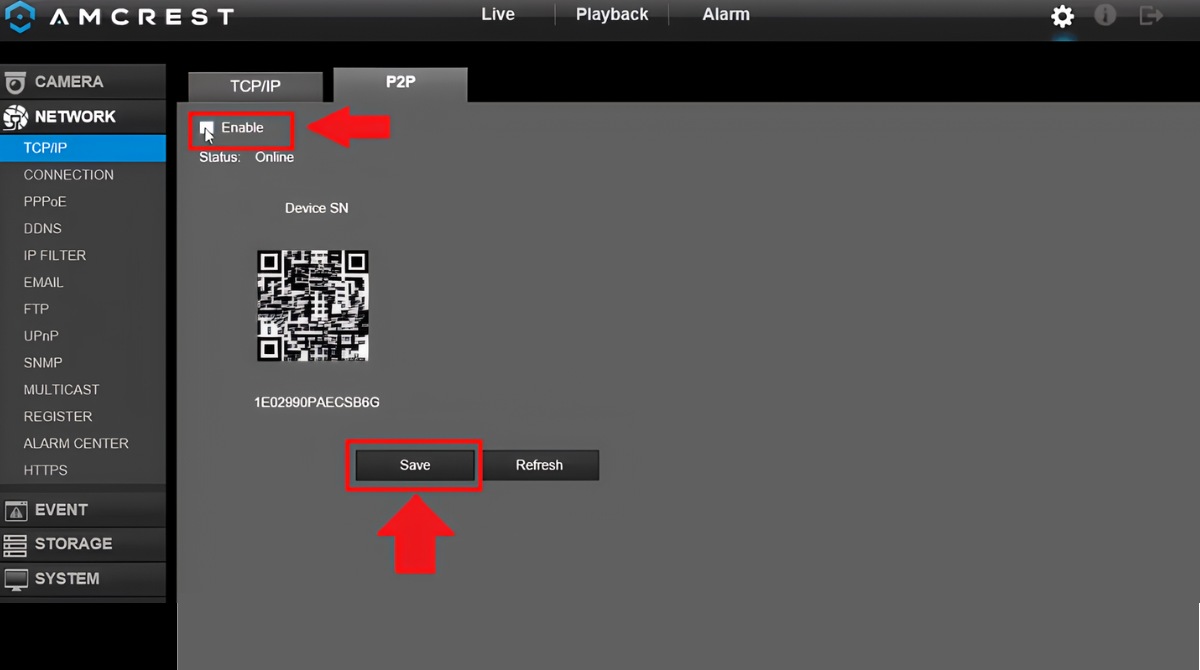Introduction
Welcome to the digital age, where connectivity is essential for both personal and professional activities. With the advent of high-speed internet, the sharing of files, media, and other digital content has become more prevalent. One method of sharing that has gained popularity is Peer-to-Peer (P2P) networking.
P2P networking allows users to directly share files with one another, bypassing the need for a centralized server. This decentralized approach has its advantages, as it enables faster downloads, increased availability of resources, and reduced strain on servers. However, P2P networking also comes with its challenges, particularly when it comes to network security and performance.
In this article, we will explore P2P networking and its implications for your network. We will delve into the reasons why it is important to be aware of P2P activity on your network and the potential signs that it might be occurring. Additionally, we will discuss methods for monitoring and managing P2P activity to ensure optimal network performance and security.
Whether you are a home user or an IT professional responsible for managing a corporate network, understanding and managing P2P activity is crucial. By staying informed and proactive, you can protect your network resources, maintain optimal internet speeds, and safeguard against potential security risks.
What is P2P?
P2P, short for Peer-to-Peer, is a type of networking architecture that allows users to directly share files, data, or resources with one another without the need for a centralized server. Unlike traditional client-server models, where information is stored on central servers and accessed by clients, P2P networks enable direct communication and collaboration between individual users.
In a P2P network, each participant acts both as a client and a server, contributing resources and utilizing resources from other participants. This decentralized approach has gained popularity due to its advantages, such as faster download speeds, increased availability of files, and scalability. It also reduces the strain on central servers, making it a cost-effective solution for sharing large files or distributing content to a wide audience.
P2P networking relies on protocols that facilitate the discovery, connection, and exchange of data between peers. Common P2P protocols include BitTorrent, eDonkey, and Gnutella. These protocols enable users to search for and download files from multiple sources simultaneously, increasing download speeds and reliability.
P2P networks have become widely used for file sharing purposes, ranging from legal activities like distributing open-source software and sharing large datasets to illegal activities like sharing copyrighted material without permission. While P2P technology itself is not inherently illegal or malicious, its decentralized nature can make it challenging to monitor and regulate.
It is important to note that P2P networks can operate on various scales. They can be as small as a group of friends sharing files between their computers or as large as a global network of millions of users exchanging data across different continents. The popularity of P2P networks has grown with the widespread availability of high-speed internet connections and the increasing demand for efficient file sharing methods.
As P2P technology continues to evolve, it is essential to understand its implications for network security, bandwidth utilization, and overall network performance. By gaining a deeper understanding of P2P networking, you can better manage and secure your network resources, ensuring optimal connectivity and productivity for all users.
Why you should know if P2P is happening on your network
In today’s digital landscape, network security and performance are of utmost importance. Understanding if P2P activity is occurring on your network is crucial for several reasons:
1. Bandwidth utilization: P2P applications are notorious for consuming significant amounts of bandwidth. When multiple users on your network engage in P2P activities, it can result in sluggish internet speeds and reduced overall network performance. By identifying and managing P2P activity, you can allocate bandwidth resources more effectively, ensuring a smooth and uninterrupted experience for all users.
2. Security risks: P2P networks can be breeding grounds for malware, viruses, and other malicious content. P2P applications often come bundled with hidden malware or open doors for unauthorized access to your network. Monitoring P2P activity allows you to identify and address any security vulnerabilities, safeguarding your network and sensitive data from potential threats.
3. Compliance and legal concerns: Depending on your organization and its policies, certain types of P2P activity may be prohibited. Illegal file sharing or downloading copyrighted material can lead to legal consequences and tarnish your reputation. By being aware of P2P activity and implementing proper controls, you can ensure compliance with regulations, protect intellectual property, and prevent any legal complications.
4. Productivity and resource management: Excessive P2P activity can consume network resources that could be better utilized for essential business operations. It can lead to slower internet speeds, causing delays in accessing critical resources or completing important tasks. Monitoring P2P activity enables you to prioritize network resources, ensuring optimal productivity levels and efficient resource allocation.
5. Network stability: Excessive P2P traffic can put a strain on your network infrastructure, potentially leading to downtime or network outages. By identifying P2P activity, you can take proactive measures to manage and balance network traffic, preventing overloads or disruptions and maintaining stable and reliable connections.
Understanding if P2P is happening on your network empowers you to take control of your network’s security, performance, compliance, and productivity. By closely monitoring and managing P2P activity, you can enhance network efficiency, mitigate security risks, and provide a reliable and secure environment for your users.
Signs that P2P might be occurring on your network
Identifying whether P2P activity is happening on your network is essential for maintaining performance, security, and compliance. Here are some signs that may indicate the presence of P2P activity:
1. Increased network traffic: If you notice a sudden surge in network traffic without any apparent reason, it could be a sign of P2P activity. P2P applications typically utilize peer connections to share files, resulting in a significant increase in data transfer and overall network utilization.
2. Slow internet speeds: When P2P applications consume a large portion of your bandwidth, it can cause a noticeable drop in internet speeds for other users. If you consistently experience slow browsing or downloads, especially during peak usage periods, it may indicate P2P activity on your network.
3. Unusual network behavior: P2P traffic often exhibits distinct patterns that can be observed through network monitoring tools. Look for irregular spikes in traffic, unusual communication between devices, or patterns of file sharing that are inconsistent with standard network usage.
4. Unwanted or suspicious file sharing: If you discover files on your network that you did not download or approve, it could be a sign of P2P activity. P2P applications often allow users to share files with others in a decentralized manner, making it easier for unauthorized or dubious content to enter your network.
5. High CPU or memory usage: P2P applications typically consume significant system resources when actively sharing files. If you notice unusually high CPU or memory usage on specific devices in your network, it may indicate the presence of P2P software running in the background.
6. Unexplained network disruptions: P2P activity can put a strain on your network infrastructure, potentially leading to intermittent connectivity issues or network interruptions. If you experience frequent network disruptions that cannot be attributed to other factors like network maintenance or hardware failures, P2P activity may be the cause.
To accurately determine if P2P activity is occurring on your network, it is recommended to use network monitoring tools that can provide detailed insights into network traffic, protocols, and application usage. These tools can help you identify the source and extent of P2P activity, enabling you to take appropriate actions to manage and control it.
By staying vigilant and watching for these signs, you can effectively detect and address any P2P activity that may be impacting your network’s performance, security, or compliance.
Increased network traffic
One of the key signs that indicate the presence of P2P activity on your network is increased network traffic. P2P applications are designed to allow users to share files directly with each other, often resulting in large amounts of data being transferred.
When P2P activity is happening on your network, you may notice a sudden and significant spike in network traffic. This increased traffic can have several consequences, including slower internet speeds, network congestion, and reduced performance for other users and network-dependent applications.
The reason behind this surge in network traffic is the nature of P2P file sharing. Instead of relying on a central server to host files, P2P networks distribute the load across multiple users who are simultaneously downloading and uploading files. This distributed architecture maximizes download speed and availability by leveraging the combined resources of the network participants. However, it also results in a high volume of data being transmitted through your network infrastructure.
To detect increased network traffic caused by P2P activity, you can utilize network monitoring tools that provide insights into bandwidth utilization and traffic patterns. These tools can provide graphical representations of network traffic, allowing you to identify any abnormal spikes or sustained high levels of data transfer. Monitoring network statistics over a specific period of time can give you a clearer picture of the extent and frequency of P2P activity on your network.
Managing increased network traffic caused by P2P activity is essential to maintain network performance and provide a reliable internet connection for all users. Here are a few strategies to consider:
- Bandwidth allocation: Prioritize network resources by allocating bandwidth to critical applications and services, ensuring that P2P traffic does not monopolize the available bandwidth.
- Traffic shaping: Implement traffic shaping policies to limit the bandwidth available to P2P applications, preventing them from overwhelming other network activities.
- Quality of Service (QoS) configurations: Configure QoS settings to assign higher priority to latency-sensitive applications, such as real-time communication or business-critical services, while limiting the impact of P2P traffic.
- Firewall and traffic filtering: Utilize firewall rules and traffic filtering mechanisms to selectively block or regulate P2P traffic based on protocol or specific application signatures.
By actively managing increased network traffic caused by P2P activity, you can balance network resources, optimize internet speeds, and ensure a smooth and efficient network experience for all users.
Slow internet speeds
Do you find yourself constantly frustrated by slow internet speeds? If so, it could be a sign that P2P activity is happening on your network. P2P applications are known to consume a significant portion of available bandwidth, leading to decreased internet speeds for other users and network-dependent tasks.
When P2P activity occurs, it can saturate your network’s bandwidth capacity as users download and share files simultaneously. This congestion can result in slow internet speeds, making it difficult to browse websites, stream media, or carry out online activities efficiently. Slow internet can impact productivity, cause delays in accessing critical resources, and lead to a frustrating user experience.
To identify if slow internet speeds are caused by P2P activity, consider the following factors:
1. Network utilization: Monitor your network’s bandwidth utilization using network monitoring tools. Abnormally high and sustained levels of data transfer during periods of slow internet speeds can indicate P2P activity.
2. Time of day: P2P activity tends to peak during specific times, such as evenings or weekends when users are more likely to engage in file sharing or media downloads. If slow internet speeds consistently occur during these periods, it may suggest P2P activity.
3. Concurrent upload and download: P2P applications often require users to upload files while they are downloading. This bidirectional data transfer can strain your network’s capacity and contribute to slower internet speeds.
If you determine that slow internet speeds are indeed caused by P2P activity, there are several measures you can take to address the issue:
- Bandwidth management: Prioritize critical applications and allocate sufficient bandwidth to essential tasks while limiting the bandwidth available to P2P applications.
- Traffic shaping: Implement traffic shaping policies to control and regulate P2P traffic, ensuring that it does not excessively impact other network activities.
- Quality of Service (QoS) configurations: Configure QoS settings to assign higher priority to latency-sensitive applications, guaranteeing their performance even during periods of high P2P activity.
- Network upgrades: Consider upgrading your network infrastructure, including routers, switches, and internet service plans, to accommodate higher bandwidth demands caused by P2P activity.
- Educate users: Raise awareness among network users about the impact of P2P activity on internet speeds and encourage responsible file sharing practices.
By addressing the issue of slow internet speeds caused by P2P activity, you can improve network performance, enhance user experience, and ensure a more productive and efficient internet connection for all users on your network.
Unusual network behavior
When it comes to detecting if P2P activity is happening on your network, observing any unusual network behavior can provide valuable insights. P2P traffic often exhibits distinct patterns and characteristics that differ from regular network activity. By monitoring network behavior, you can identify irregularities that may indicate the presence of P2P activity.
Here are some signs of unusual network behavior that may suggest the occurrence of P2P activity:
1. Irregular traffic spikes: P2P applications typically generate spikes in network traffic as users download and upload files simultaneously. If you notice sudden, significant, and repetitive spikes in network usage during certain periods, it could be an indicator of P2P activity.
2. Unusually high data transfer rates: P2P activity often involves transferring large files between peers. If you observe consistently high data transfer rates for extended periods, especially when there is no apparent explanation, it may suggest the presence of P2P file sharing.
3. Uncommon communication between devices: P2P applications establish direct connections between peers for file sharing purposes. Look for any communication patterns or connections between devices that are outside the normal scope of your network’s expected communication, as this could be a sign of P2P activity.
4. Patterns of file sharing: P2P networks rely on users sharing files with one another. If you notice a high volume of file sharing between different devices on your network, particularly involving file types commonly associated with P2P activity, it may indicate P2P file sharing is taking place.
5. Extended periods of sustained network activity: P2P applications often require continuous network connectivity to facilitate file sharing. If you observe unusually long periods of sustained network activity, particularly during times when network usage is typically low, it could be an indication of ongoing P2P activity.
To effectively monitor and identify unusual network behavior, consider implementing network monitoring tools that provide real-time visibility into network traffic, protocols, and patterns. These tools can help you analyze network behavior, identify P2P activity, and gain valuable insights into the extent and impact of P2P usage.
If unusual network behavior suggesting P2P activity is detected, it is important to take appropriate actions to manage and control it. This can include implementing network policies or security measures to restrict or limit P2P activity, educating users about the impact of P2P on network performance, and utilizing firewall rules or traffic filtering mechanisms to selectively block or regulate P2P traffic.
By actively monitoring and responding to unusual network behavior, you can ensure network security, manage bandwidth utilization effectively, and maintain optimal network performance for all users.
Monitoring network activity
Monitoring network activity is crucial for understanding and managing the various aspects of your network performance, security, and resource allocation. By effectively monitoring your network, you can gain valuable insights into the presence of P2P activity, identify potential issues, and implement appropriate measures to optimize your network usage.
Here are some key strategies and tools for monitoring network activity:
1. Network monitoring tools: Utilize network monitoring software to collect and analyze data about your network’s performance, bandwidth utilization, and traffic patterns. These tools provide real-time visibility into network activity and enable you to identify any abnormal behaviors, including P2P traffic.
2. Bandwidth monitoring: Monitor your network’s bandwidth usage to understand how it is being allocated and utilized. By keeping track of bandwidth consumption over time, you can identify if excessive bandwidth is being consumed by P2P applications and take appropriate actions to regulate it.
3. Protocol analysis: Network monitoring tools often provide the ability to perform protocol analysis, allowing you to inspect network traffic at the packet level. This level of analysis can help identify specific protocols associated with P2P activity and track their usage across your network.
4. Device monitoring: Keep track of the devices connected to your network and monitor their activity. Look for any devices that might be consistently engaged in high data transfer rates, unusual communication patterns, or unauthorized file sharing. This can help identify devices that may be involved in P2P activity.
5. User activity monitoring: Monitoring user activity on your network can offer insights into individual behaviors that may be contributing to P2P activity. By monitoring the usage patterns, connection history, and file transfer activities of network users, you can identify any unauthorized or excessive P2P activity and take appropriate actions.
6. Anomaly detection: Implementing anomaly detection mechanisms can help identify any unusual or suspicious network behaviors. By setting thresholds and monitoring for deviations from normal network activity, you can quickly detect potential P2P activity or other security threats that require immediate attention.
By consistently monitoring network activity, you can gain a holistic understanding of your network environment, detect any signs of P2P activity, and take proactive measures to manage and control it. Monitoring not only helps optimize network performance and security but also ensures that your network resources are efficiently utilized across various business operations.
Using network monitoring tools
Network monitoring tools play a vital role in effectively managing and optimizing your network performance. These tools provide real-time visibility into network activity, allowing you to monitor and analyze various aspects of your network to ensure smooth operation and identify any potential issues. When it comes to detecting and managing P2P activity on your network, network monitoring tools can be immensely helpful.
Here are some ways in which network monitoring tools can assist in monitoring P2P activity:
1. Real-time visibility: Network monitoring tools give you instant access to real-time data about your network. You can monitor network traffic, protocols used, device activity, and bandwidth utilization at any given moment. This real-time visibility enables you to quickly identify P2P activity as it happens, allowing for immediate action.
2. Historical data analysis: Network monitoring tools collect and store historical data about your network’s performance. By analyzing this data, you can identify trends, patterns, and recurring instances of P2P activity. Understanding historical P2P usage can help you anticipate future occurrences and plan accordingly.
3. Bandwidth utilization tracking: Network monitoring tools provide insights into bandwidth usage across your network. You can track the bandwidth consumed by P2P applications and identify if they are monopolizing network resources. This information allows you to allocate bandwidth effectively and prevent P2P activity from negatively impacting other network operations.
4. Protocol analysis: Network monitoring tools can perform protocol analysis, helping you identify the specific protocols associated with P2P activity. This allows you to filter and analyze network traffic based on P2P protocols, enabling you to monitor and control P2P usage more effectively.
5. Alert notifications: Network monitoring tools can be configured to send alerts when certain network conditions are met. For example, you can set up notifications to alert you when there is a sudden increase in P2P traffic or when particular devices or users engage in excessive P2P activity. These alerts help you identify and respond to P2P activity promptly.
6. Reporting and analytics: Network monitoring tools often offer reporting and analytics capabilities, enabling you to generate comprehensive reports on network performance, P2P activity, and other relevant metrics. These reports provide valuable insights, assist in decision-making, and help demonstrate compliance with network usage policies.
When using network monitoring tools to monitor P2P activity, it is crucial to ensure that the tools you choose have the necessary features and capabilities to suit your network’s specific requirements. Consider factors such as scalability, ease of use, customizable alerting, and compatibility with your network infrastructure.
By leveraging the capabilities of network monitoring tools, you can gain deep visibility into your network, identify P2P activity, and take proactive measures to manage and control it. These tools empower you to optimize network performance, allocate resources effectively, and ensure a secure and efficient network environment for all users.
Identifying P2P applications and protocols
To effectively manage and control P2P activity on your network, it is essential to be able to identify the specific P2P applications and protocols being used. Different P2P applications employ various protocols for file sharing and communication. By identifying these applications and protocols, you can gain insights into the nature and extent of P2P activity on your network.
Here are some methods to help you identify P2P applications and protocols:
1. Network monitoring tools: Utilize network monitoring tools that offer protocol analysis capabilities. These tools can inspect packet-level data and identify the specific protocols associated with P2P activity. By monitoring network traffic using these tools, you can pinpoint the protocols being used, such as BitTorrent, eDonkey, or Gnutella.
2. Deep packet inspection (DPI): Deep packet inspection is a technique used by some network monitoring tools and firewalls to analyze network traffic at a granular level. It allows the detection and identification of specific application protocols, including those used by P2P applications. DPI can provide detailed information about the presence and characteristics of P2P traffic on your network.
3. Traffic analysis: Analyze the patterns, characteristics, and behavior of network traffic to identify potential P2P activity. P2P traffic often exhibits distinctive features, such as a high number of connections, simultaneous uploads and downloads, and large file transfers. By monitoring and analyzing your network traffic, you can detect these patterns and infer the presence of P2P applications.
4. Port identification: Some P2P applications use specific ports for communication. By monitoring network traffic and identifying the ports being used, you can narrow down the potential P2P applications in use. However, it’s important to note that not all P2P applications can be accurately identified solely based on port numbers, as some applications can use common ports or even dynamically assign ports.
5. Application signatures and databases: Commercial network monitoring tools and threat intelligence services maintain databases of known signatures associated with P2P applications. These tools analyze network traffic and compare it against their database to identify potential P2P activity. This method can be useful in detecting both popular and less common P2P applications.
It’s worth noting that identifying P2P applications and protocols may require a combination of these methods, as P2P applications can employ various techniques to evade detection or obfuscate their traffic. Additionally, new P2P applications and protocols are constantly emerging, making it essential to keep your network monitoring tools and methods up to date.
By accurately identifying P2P applications and protocols, you can gain a better understanding of P2P activity on your network. This knowledge empowers you to implement appropriate controls, set policies, allocate bandwidth effectively, and ensure a secure and efficient network environment.
Blocking or limiting P2P activity on your network
Managing P2P activity on your network is essential to maintain performance, optimize bandwidth utilization, and ensure network security. Depending on your specific needs and requirements, you may choose to block or limit P2P activity on your network. Here are some methods you can employ:
1. Firewall rules: Configure your network firewall to block or restrict P2P traffic based on specific protocols or port numbers associated with P2P applications. This approach allows you to selectively allow or disallow P2P activity on your network, providing granular control over P2P usage.
2. Traffic shaping or QoS policies: Implement traffic shaping or Quality of Service (QoS) policies to prioritize certain types of network traffic over P2P traffic. By assigning lower bandwidth priority to P2P applications, you can ensure that other critical network activities, such as business applications or real-time communication, receive sufficient bandwidth for optimal performance.
3. Application-aware firewalls: Deploy application-aware firewalls that can identify and control specific P2P applications, rather than only relying on protocol or port blocking. These firewalls use techniques like deep packet inspection to detect and block P2P applications based on their signatures or behavior.
4. Content filtering: Utilize content filtering solutions to block or restrict access to websites or domains associated with P2P file sharing. Content filtering can help prevent users from downloading or accessing P2P applications or content from the internet.
5. User education and acceptable use policies: Educate your network users about the risks and impact of P2P activity on the network. Establish clear acceptable use policies that outline your organization’s stance on P2P activity. By raising awareness and providing guidelines, you can encourage responsible network usage and discourage unauthorized or excessive P2P file sharing.
6. Implementing network access controls: Utilize network access controls to restrict P2P activity to specific devices or user groups. By creating separate network segments or VLANs and implementing strict access control measures, you can isolate and contain P2P activity, ensuring that it doesn’t impact other network resources or compromise security.
When implementing measures to block or limit P2P activity, it is important to strike a balance between network management and user needs. Complete blocking of P2P activity may hinder legitimate file sharing or collaboration efforts within your organization. It’s crucial to evaluate your network requirements and consider the specific needs of your users when deciding on the appropriate level of restriction.
Regular monitoring and periodic reassessment of these measures are essential to ensure that they are effective in managing P2P activity on your network and align with your network usage policies and security objectives.
By employing the right methods to block or limit P2P activity on your network, you can maintain network efficiency, enhance security, and promote responsible network usage.
Conclusion
Managing and monitoring P2P activity on your network is crucial for maintaining network performance, security, and compliance. By understanding the signs of P2P activity and implementing appropriate measures, you can effectively control and optimize your network resources.
P2P networks offer numerous benefits, such as faster downloads and increased availability of resources. However, they also present challenges, including potential security risks, excessive bandwidth utilization, and network congestion. By proactively monitoring network activity, you can detect signs of P2P activity, such as increased network traffic, slow internet speeds, and unusual behavior, allowing you to take appropriate actions.
Utilizing network monitoring tools provides real-time visibility into network traffic, bandwidth utilization, and protocols. These tools help identify specific P2P applications and protocols, allowing for effective monitoring, blocking, or limiting of P2P activity. Implementing firewall rules, traffic shaping policies, and content filtering solutions, alongside user education and network access controls, can help manage P2P activity on your network.
It is important to strike a balance between managing P2P activity and enabling legitimate file sharing and collaboration. Consider the specific needs of your organization when implementing restrictions and periodically reassess these measures to ensure they align with your network usage policies and security objectives.
By effectively managing and controlling P2P activity on your network, you can optimize network performance, ensure reliable internet speeds, enhance network security, and maintain compliance with regulations. Regular monitoring, proactive measures, and user awareness are key to maintaining a secure and efficient network environment for all users.

























